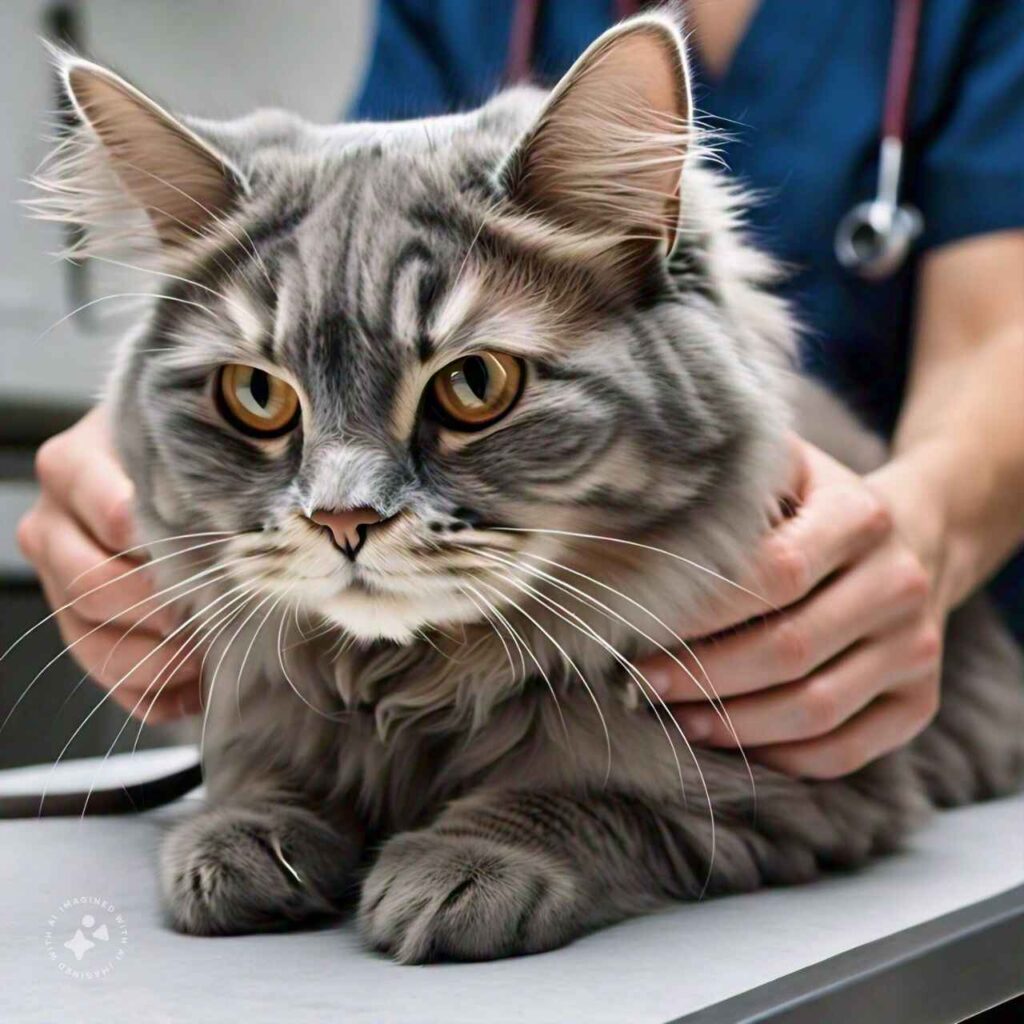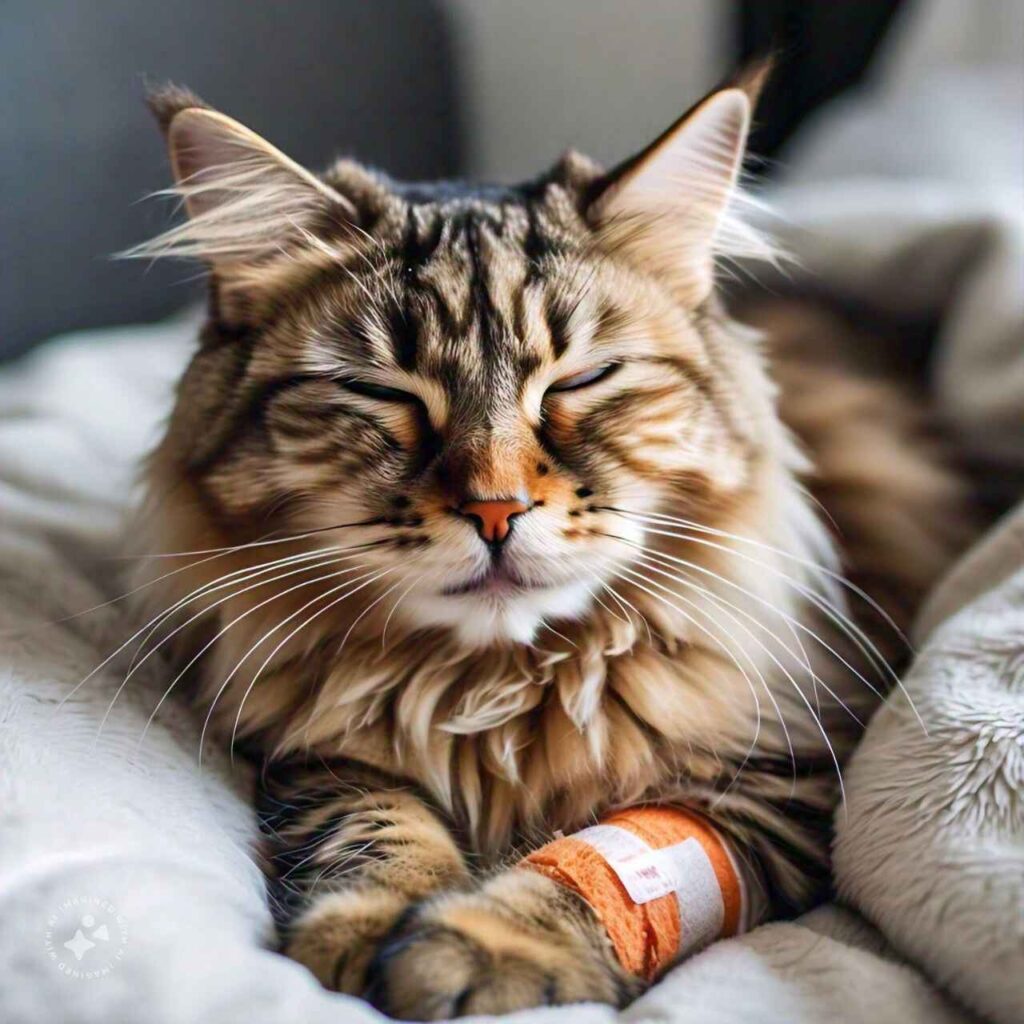1. Introduction to Neuter Care

Neutering is a critical aspect of responsible cat ownership that involves surgical procedures to remove the reproductive organs of your feline friend. This process is also commonly referred to as spaying for females and castrating for males. Understanding the importance of neutering and the associated care can significantly contribute to the long-term health and happiness of your cat, as well as help in controlling the cat population.
Importance of Neutering
The necessity for neutering stems from several factors, the most prominent being population control. Each year, millions of cats find themselves in shelters due to overpopulation. One unspayed female cat can produce two litters each year, with an average of four to six kittens per litter. This exponential growth can lead to a staggering number of homeless cats, which can strain local shelters and animal welfare organizations. By neutering your cat, you are actively participating in the effort to reduce these numbers and help prevent the suffering of countless animals.
In addition to population control, neutering provides significant health benefits. For male cats, neutering eliminates the risk of testicular cancer and reduces the likelihood of prostate diseases, which can affect older unaltered males. For female cats, spaying significantly decreases the risk of mammary tumors and entirely prevents uterine infections, known as pyometra, which can be life-threatening.
Neutering can also positively influence behavior. Neutered male cats are often less aggressive, less likely to roam, and less prone to marking their territory with urine. Similarly, female cats that have been spayed do not go into heat, which can be a source of stress for both the cat and the owner. Understanding these benefits can help you make an informed decision about neutering your pet.
Overview of Neuter Care
Neuter care encompasses a holistic approach to your cat’s health surrounding the neutering procedure. This includes preparing your cat for the surgery, understanding what to expect during the operation, providing post-operative care, and recognizing any potential complications.
Effective neuter care begins with educating yourself about the procedure. This includes learning about pre-operative preparations, the surgery itself, and the necessary follow-up care. Being informed not only alleviates stress for you and your cat but also enhances the likelihood of a smooth recovery.
This guide aims to provide you with comprehensive information about every aspect of neuter care, ensuring that you are well-prepared to support your feline companion through this important process.
2. Preparing for the Neutering Procedure

Pre-Surgery Checklist
Preparation is crucial for ensuring the safety and effectiveness of the neutering procedure. Start by scheduling a pre-operative veterinary examination. This visit is essential to confirm that your cat is healthy enough for surgery. Your veterinarian will review your cat’s medical history, discuss any current health issues, and ensure that all vaccinations are up to date.
Most veterinarians will require your cat to be vaccinated against common feline diseases such as feline panleukopenia, calicivirus, and rhinotracheitis. Ensuring that your cat is vaccinated not only protects them during the surgery but also helps reduce the risk of infections afterward.
In the days leading up to the surgery, you may need to prepare your cat by following specific fasting instructions. Typically, veterinarians recommend withholding food for about 8-12 hours before the procedure. However, your cat should have access to fresh water until the time specified by your vet.
Choosing the Right Veterinarian
Choosing a qualified veterinarian is one of the most critical decisions you will make for your cat’s neutering process. Look for a veterinarian who specializes in feline care and has a good reputation within your community. Feedback from fellow pet owners and online testimonials can offer valuable perspectives.
During your initial consultation, discuss the entire neutering process, including the anesthesia options and pain management protocols. A reputable veterinarian will be transparent about the procedure and can answer any questions you may have. They should also discuss the risks involved and how they plan to mitigate them, ensuring that you feel comfortable and informed.
It’s essential to establish a good rapport with your veterinarian, as this relationship will be vital for your cat’s ongoing health and wellness. A knowledgeable and compassionate vet will make the neutering experience less stressful for both you and your cat.
3. What to Expect During the Surgery

The Neutering Process
On the day of the surgery, you will bring your cat to the veterinary clinic. After checking in, the vet will conduct a final assessment to ensure your cat is ready for the procedure. Your cat will then be placed under general anesthesia to ensure they feel no pain during the operation.
The neutering procedure for male cats is relatively straightforward. The veterinarian will create a small opening in the scrotum to extract the testicles.. This procedure, known as castration, typically takes about 30 minutes. Male cats generally recover quickly and can often go home the same day.
For female cats, the procedure is a bit more complex. Spaying requires an abdominal incision to surgically remove the ovaries and uterus. This procedure takes longer and requires a more extended recovery period. Both surgeries are typically performed using sterile techniques to minimize the risk of infection.
Anesthesia and Safety Measures
Modern veterinary practices utilize advanced anesthetic protocols to ensure the safety and comfort of your pet during surgery. Prior to anesthesia, your veterinarian may conduct blood tests to assess your cat’s overall health and ensure that they are suitable candidates for the procedure.
During the surgery, your cat’s vital signs will be continuously monitored, including heart rate, respiratory rate, and blood pressure. These measures are essential for ensuring that your cat remains stable throughout the procedure.
After the surgery, your cat will be moved to a recovery area where they will slowly awaken from anesthesia. It’s normal for them to appear groggy or disoriented at first. Your veterinarian will provide specific aftercare instructions to ensure a smooth recovery.
4. Post-Surgery Care for Your Cat

Immediate Aftercare Instructions
Once you bring your cat home, it’s crucial to create a calm and quiet environment to facilitate recovery. Designate a comfortable space away from loud noises and other pets, as this will help your cat feel secure. You can provide a cozy bed, blankets, and toys to keep them comfortable.
Monitor your cat closely in the first few hours after surgery. They may still be groggy from anesthesia, so it’s important to prevent them from jumping or engaging in any strenuous activity. Make sure they have access to fresh water and offer a small amount of food if they seem ready to eat.
Your veterinarian will provide specific post-operative care instructions, including medication for pain management. Administer these medications as directed, and keep a close eye on your cat for any unusual behaviors or signs of distress.
Signs of Complications to Watch For
While complications from neutering are rare, it’s essential to be vigilant in monitoring your cat’s recovery. Keep an eye on the incision site for any signs of swelling, redness, or discharge. These may signal the presence of an infection or other complications.
If you notice excessive bleeding, if your cat is in apparent pain, or if they seem lethargic beyond the expected recovery period, contact your veterinarian immediately. Other red flags include loss of appetite lasting more than 24 hours, vomiting, or any unusual behavior that raises concerns.
Being proactive about your cat’s recovery can prevent more severe complications and ensure a smoother healing process.
5. Long-Term Health Benefits of Neutering
Impact on Behavior and Lifestyle
One of the most significant advantages of neutering is its positive impact on your cat’s behavior. Neutered male cats are generally less aggressive and are less likely to exhibit territorial behaviors, such as spraying. This reduction in aggressive behavior can create a more harmonious environment in your home, reducing stress for both you and your pet.
Female cats that are spayed will no longer experience heat cycles, which can be disruptive. During heat, female cats may vocalize excessively and exhibit behaviors aimed at attracting mates, such as increased affection or restlessness. By neutering, you can eliminate these behaviors, leading to a more peaceful household.
Reducing Health Risks
Neutering also significantly lowers the risk of certain health issues. Male cats that are neutered have a drastically reduced risk of developing testicular cancer and prostate problems as they age. For female cats, spaying eliminates the risk of uterine infections and drastically reduces the chances of developing mammary tumors.
Research indicates that neutered cats often live longer, healthier lives. This not only improves their quality of life but also strengthens the bond between you and your pet, as a healthier cat is a happier companion.
6. Nutrition and Diet After Neutering

Dietary Adjustments for Recovery
After the surgery, providing your cat with a balanced diet that supports healing is essential. Start with soft, easy-to-digest foods, gradually transitioning back to their regular diet as they recover. High-quality, protein-rich diets can aid in recovery and help maintain muscle mass.
Hydration is also crucial. Ensure your cat has a steady supply of fresh water available at all times to avoid dehydration If your cat seems reluctant to drink, consider offering ice cubes or a water fountain to encourage them to hydrate.
Weight Management Tips
Many cats experience changes in metabolism after neutering, which can lead to weight gain. To help manage your cat’s weight, monitor their food intake closely. Follow your veterinarian’s recommendations for portion sizes and caloric intake.
Incorporate regular exercise into your cat’s routine. Engage them in interactive play using toys like feather wands or laser pointers to encourage physical activity. Creating a routine that incorporates daily playtime can help maintain a healthy weight and keep your cat mentally stimulated.
7. Monitoring Recovery Progress
Follow-Up Appointments
Follow-up appointments with your veterinarian are essential for monitoring your cat’s recovery. Typically, a follow-up visit will occur about 7 to 10 days post-surgery. During this visit, your vet will check the incision site and assess your cat’s overall health. They may also remove stitches if necessary.
These follow-up appointments are crucial for addressing any concerns and ensuring that your cat is healing properly. Don’t hesitate to voice any questions or concerns you may have during these visits.
Long-Term Health Monitoring
After the initial recovery period, it’s important to continue monitoring your cat’s health over the long term. Regular veterinary check-ups, at least once a year, are vital for early detection of potential health issues. Keep an eye on your cat’s weight, behavior, and appetite, as changes can indicate underlying health problems.
Additionally, maintaining a proper diet and encouraging regular exercise will contribute to your cat’s overall well-being. A proactive approach to your cat’s health care will help ensure that they lead a long, healthy, and happy life
· What is neutering? Neutering involves a surgical operation that eliminates the reproductive organs in cats. For males, it’s called castration, while for females, it’s known as spaying. This process helps control the cat population and offers health benefits.
· Why should I neuter my cat? Neutering prevents unwanted litters, reduces health risks like cancer, and improves behavior. Neutered cats are less likely to exhibit aggression or territorial marking, leading to a more harmonious home environment.
· How should I prepare my cat for surgery? Schedule a pre-operative veterinary exam to ensure your cat is healthy and up to date on vaccinations. Follow fasting instructions and choose a qualified veterinarian with experience in feline care.
· What post-operative care is needed? Create a calm recovery space and monitor the incision site for signs of infection. Ensure your cat stays hydrated and follows any pain management protocols provided by your veterinarian.
· What are the long-term benefits of neutering? Neutering leads to lower risks of certain cancers and health issues, promoting a longer lifespan. It also reduces disruptive behaviors associated with mating instincts, enhancing your cat’s quality of life
8. Conclusion:
In conclusion, neutering is an integral part of responsible pet ownership that offers numerous benefits for both your cat and the broader community. By understanding the importance of neutering and implementing effective neuter care, you can significantly enhance your cat’s quality of life.
From preparing for the procedure to providing post-operative care and long-term health monitoring, each step is vital for ensuring a positive experience for your feline companion. Neutering not only reduces the risk of health issues and improves behavior but also plays a crucial role in controlling the pet population.
As a responsible cat owner, committing to neutering and its associated care reflects a dedication to the well-being of your pet and the welfare of cats everywhere. Embrace this responsibility, and you will foster a healthier, happier life for your furry friend
